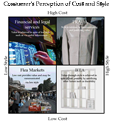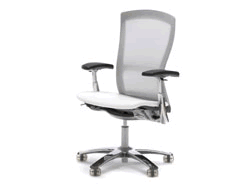
I’ve mentioned the Rotman Management (University of Toronto) design issue (.pdf) recently, but having finished it I’d like to point out what’s worth reading in this worthy mag:
First, if you’re printing just do pgs. 5-30. The rest is fluff and alumni only.
The dean’s column on page 7 contrasts the business focus on optimization throughout the 20th Century with the design focus on invention: ‘Value creation in the 20th century was largely defined by the conversion of heuristics to algorithms. It was about taking a fundamental understanding of a ‘mystery’ a heuristic and driving it to a formula, an algorithm so that it could be driven to huge scale and scope… I would argue that in the 21st century, value creation will be defined more by the conversion of mysteries to heuristics and that as a result, we are on the cusp of a design revolution in business.‘
On page 12 Darden professor Jeanne Liedtka takes a more intellectual view, contrasting design and science: ‘The most fundamental difference between the two, they argue, is that design thinking deals primarily with what does not yet exist; while scientists deal with explaining what is. That scientists discover the laws that govern today’s reality, while designers invent a different future is a common theme. Thus, while both methods of thinking are hypothesis-driven, the design hypothesis differs from the scientific hypothesis.‘
Demand Innovation on page 26 is a quick case study by Adrian Slywotzky of Mercer Management Consulting on a product company that looks at the higher-order needs of its customers and creates services that help customers use its products. ‘These companies are focused on creating new growth and new value by addressing the hassles and issues that surround their products rather than by improving the products themselves. They have shifted their approach from product innovation to demand innovation.‘










